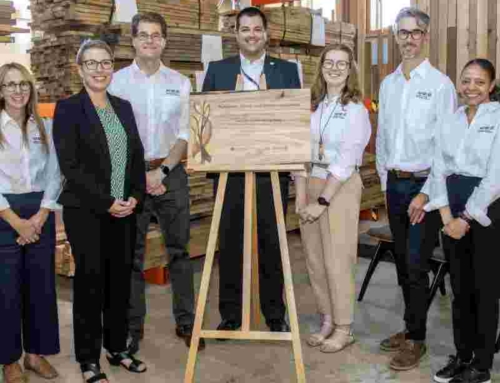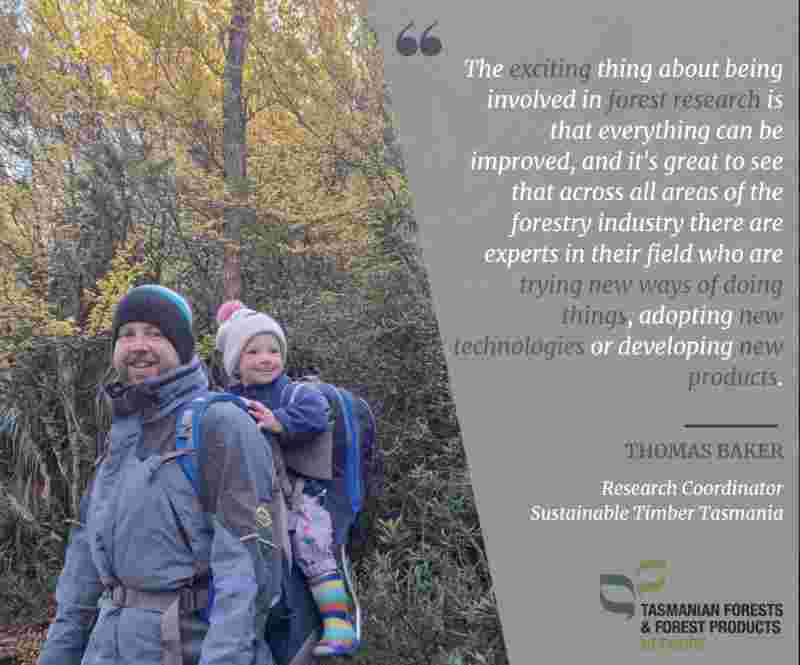Forests part of the environmental solution – an oped by James Neville-Smith
Oped supplied by James Neville-Smith
Climate Change is real. However, if we are to have any chance of fixing it, we need to be pragmatic and less emotional. There are many layers to the carbon story, but I am only familiar with the most ignored renewable we have available to us – forests. We can make a material difference to Australia’s climate change mitigation efforts by better managing our 132 million hectares of native forest. And the science – even the United Nations – tells us that the way to do this is not by locking up the forests in perpetuity, but by better managing them.
Sound too good to be true? Let me explain.
Any credible climate change policy must include a robust management plan for the natural forests – our lungs of the planet. These lungs are renewable, they play a large role in providing the air we breathe and for thousands of years have and can continue to provide the human race with critical infrastructure: homes, buildings, the contents therein, and more. By using wood, we avoid non renewables (plastics, fossil fuels, energy-intensive construction materials such as steel and concrete), and we are happier and healthier in our homes.
90% of the weight of wood is stored carbon. Wood used in buildings stores carbon for the life of the product and this is a critical tool in the fight against climate change. This unequivocal fact is why the demand for wood continues to rise every year – which is only good for the planet as long as the forests from where the trees were harvested are managed sustainably. To ensure sustainable forest practices are implemented, as consumers we can choose certified wood products, either PEFC (Responsible Wood in Australia) or FSC which are the two leading global forest certification schemes.
If we agree that forestry, managed sustainably, is one of very few absolute renewables opportunities we have available to us on earth, we must be globally minded about how we manage our Australian forests vs those forests from overseas, especially in the context of the urgency and therefore need to act on climate change.
But don’t take it from me. The United Nations’ advisory body on climate change, the Intergovernmental Panel on Climate Change (IPCC), said in its landmark 4th assessment report, “while producing an annual sustained yield of timber, fibre or energy from the forest, will generate the largest sustained mitigation benefit.” In other words, managing our forests for sustainable timber production produces a better carbon (that is, climate change mitigation) outcome than just leaving the forest untouched. The IPCC was even more definitive in its most recent publication (IPCC report) released in August 2019:
“Sustainable forest management aimed at providing timber, fibre, biomass, non-timber resources and other ecosystem functions and services, can lower GHG [greenhouse gas] emissions and can contribute to adaptation.”
In other words, the type of forest management that is already practiced in our public forests that are sustainably managed for timber production, and which environmental activists are hellbent on ending.
Consider this: 100% of the native forest operations conducted on public land in Australia are certified by PEFC, the biggest global forest certification scheme. (www.pefc.org) However, only about 10% of natural forests worldwide are certified at all. That means that for every 10 overseas forest operations, in nine of them we don’t know if the trees are being replanted hence the strong likelihood of perpetual wildlife habitat loss.
The Australian native/natural forestry sector has been closed down to such an extent that here in Australia we import 80% of our hardwood needs. As a nation we have eroded a sustainable industry in favour of timber sourced from countries that practice what can only be described as environmental vandalism. At the same time, we have put thousands of Australians in regional communities out of work, gutted communities and hurt our economy.
Putting aside the “carbon miles” (Consumption of Crude oil in ships), the fact is that it is very likely that a large proportion of this imported lumber or finished furniture is sourced from non-certified forestry operations, promoting the destruction of forests in the Amazon, Congo, or critical habitat for endangered species such as Orangutans.
Yet here in Australia, our policy setting driven by environmentalists have our forestry sector on its knees.
In Victoria the Andrews Government wants to close the last remaining industry which today sustainably manages under world’s best practice just 6% (yes, 94% are in a reserve of some kind) of the entire forest estate. Indeed, that area is almost halved after the code of forest practice is implemented (removing areas from harvest, like stream side reserves, eagle nest buffers, habitat tree buffers etc), leaving about 3% of the forest areas, which is managed on a 60 year sustainable rotation, meaning what’s cut down today and regrown won’t need to be cut again for another 60 years. To put it another way, every year approximately 4 trees out of every 10,000 are harvested and regrown in Victoria.
Those that have for decades been trying to stop Australia’s forests from being harvested have done so because they are either ideologically driven, or are they blind to the science of sustainability? After all, every tree harvested for timber in our native forests is regenerated by law. As a result, there is no net reduction in forest area as a result of timber production.
Surely we need to manage our entire forestry estate for a range of values (Environmental, Social and Economic) which, if done well, can and will enhance the overall protection of the forests ecosystem including wildlife, protect the communities and infrastructure that lie within close proximity of the forests from bushfire, and create locally produced timber products creating stronger regional economies and in turn communities. And lastly take the demand away from overseas forestry operations!
We must stop looking at agriculture (which includes forestry) as part of the problem, if we take our blinkers off, we will find agriculture, including sustainable forestry is indeed a critical part of the solution.
















